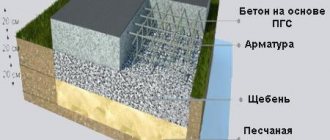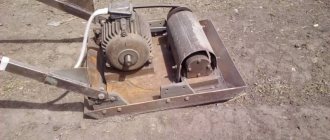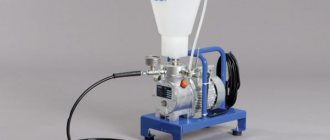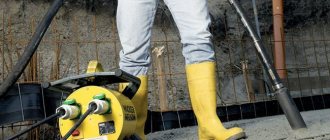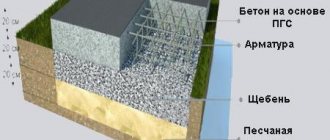Solid base
One of the most important characteristics in road construction is compaction. From the base of the canvas to the top crushed stone layer and coating, each layer must be poured from the appropriate material, have the correct thickness, density and withstand a certain load. And in road construction, the highest density standards are adopted. Therefore, choosing equipment for compaction is not an easy and responsible task.
Let's look at some types of full-size road rollers and their areas of application.
Weight and size
According to these indicators, machines are divided into 3 types:
- lungs
. Equipment of this class weighs no more than 6 tons, and the distributed load does not exceed 40 kN/m; - average
_ They weigh 6-10 tons, the distributed load is 40-60 kN/m. The power of power units that equip middle-class special equipment is 20-30 kW; - heavy
. These are machines equipped with high-power motors (more than 30 kW). The load they distribute exceeds 60 kN/m.
Lightweight rollers have found application in the construction of sidewalks, as well as areas not designed for heavy loads. This technique is also used in the construction of other road facilities for the purpose of preliminary compaction of the surface. Using the second type of equipment, the surface of various roads is compacted. Still others are suitable for compacting any type of surface - asphalt or asphalt concrete, as well as layers of crushed stone and gravel.
What types of road rollers are there?
Machines share:
- Based on the operating principle: static and vibration. Static rollers compact layers of material by force of their own gravity when the actuator moves along the working layer. Vibrating rollers add dynamic load from vibrations of one of the rollers to the effect on the material.
- According to the applied method of movement, semi-trailer and self-propelled. In semi-trailer devices, part of the weight load is distributed to the towbar of the wheeled tractor-tractor. Self-propelled vehicles move using their own internal combustion engine.
- Based on the number of axles, one, two and three-axle rollers are distinguished.
- The number of rollers determines one, two and three roller units.
Based on their own weight and design features, self-propelled rollers are divided into types:
- Vibrating and static machines:
- Type 1 includes light weights from 0.6 to 4.0 tons with one axle and one roller, with two axles and two rollers;
- Type 2 includes medium-sized machines weighing more than 6 tons, with two axles and rollers, with two axles and three rollers;
- Type 3 includes heavy machines weighing from 10 to 15 tons on two axles with two rollers, on two axles with three rollers, on three axles with three rollers.
- Semi-trailer rollers with pneumatic wheels are classified by weight:
- up to 15 tons - light vehicles;
- up to 30 t - medium;
- up to 45 tons - heavy vehicles.
- Self-propelled pneumatic rollers are divided into:
- up to 16 t - medium units;
- up to 30 tons - heavy units.
Working body type
Rollers - the working part of any roller - come in the following types:
- smooth
_ The equipment consists of metal cylinders with a smooth surface. Machines with such rollers compact asphalt and asphalt concrete; - cam
_ The rollers also have a cylindrical shape, but, unlike smooth ones, there are protrusions on their surface, the so-called cams. Rollers with such rollers are used to compact soil, hence their second name - soil; - lattice
. They are also used to roll the soil. The base of the equipment is smooth, with a metal grill on top; - pneumatic
_ Such working bodies include several pneumatic wheels. With the help of such rollers, asphalt/asphalt concrete road surfaces are compacted; - compact
_ Externally, such rollers are very similar to cam rollers. The difference between road rollers of this type is that their rollers are inferior in width to cam rollers and have a significantly smaller number of cams; - segmental
. They are a type of smooth rollers with special segments located on the rim.
Special mention should be made of special rollers. They are made only to order, when it is necessary to perform certain work using untested technologies. Such equipment combines the design features of several types of rollers.
Advantages and disadvantages
Vibratory rollers used in the construction, household and industrial sectors have a number of positive and negative qualities. The advantages include:
- Sealing ability. On average, rolling a section requires 6 to 10 passes. This parameter depends on the type of soil and purpose.
- Technological suitability. Modern vibratory rollers keep up with the work of the asphalt paver (when performing road work). The productivity of a vibrating roller is 10-20 percent greater than that of a paver.
- Economic indicators. The use of a vibratory roller allows you to use the equipment more efficiently. But here a lot depends on the selected weight, number of rollers, functions and other features.
- Reliability and ease of repair. Most modern models of vibratory rollers have a warranty period of more than five years. If any of the elements fails, replacing it is not difficult.
- Ergonomics and safety. Road vibratory rollers and other types of equipment have a comfortable driver’s cabin and the necessary set of systems to ensure safe operation.
- Affordable price. Despite the complexity of the equipment, you can choose a model taking into account your financial capabilities. As a last resort, equipment can be rented and thereby save money on other work.
- Silence. Modern models operate almost silently, which allows servicing the mechanisms without the use of special noise-canceling headphones.
In addition, many models have other advantages - maneuverability, long service life of devices / mechanisms, versatility and efficiency of use. During operation, even a light roller can compact the soil in just a few passes. Despite a number of advantages, we must not forget about some of the disadvantages of vibratory rollers:
- There is a lot of pressure on the rollers, which often leads to failure of this mechanism.
- Difficult to operate on inclined surfaces.
- The need for operator training to operate the machine.
Risk of damage in case of breakdown and towing.
Sealing method
The following types of rollers are distinguished according to the compaction method:
- static
_ The road surface is compacted due to the vehicle's own weight. The heavier the equipment, the higher the quality of layer compaction; - vibration
_ This is the most modern type of skating rink. Compaction of the road surface is achieved due to two factors at once - the vehicle’s own weight and the vibration of the working element. To achieve high-quality compaction, vibrating machines require much fewer passes than static ones. Vibratory rollers are used to build not only high-class roads, but also airfields, ports, and other facilities whose road surfaces are subject to high loads during operation.
When choosing a road construction machine for compacting asphalt, asphalt concrete or soil, it is important to take into account the characteristics of the equipment and its design features. This will allow you to choose the right roller for a specific task.
What is a vibratory roller, purpose
The operation of a vibratory roller is based on the combination of two principles: rolling / compaction under the influence of vibration and weight. The result is compaction of the treated layer and the creation of good adhesion at any stage of laying.
Important
Thanks to high-quality pressing, the durability of the final structure is increased and the appearance of cracks and chips is prevented.
During the work process, the equipment moves back and forth, preparing the surface for various construction purposes. The vibration and running systems are separated from each other, which ensures its autonomy and the ability to use technologies separately.
Tandem vibratory rollers
Double-drum (tandem) vibratory rollers are equipped with two steel rollers, each of which has a vibration effect on the ground (each can be equipped with a separate vibrator or one common one). Such rollers are equipped with various vibration systems that can generate vibrations with different frequencies and amplitudes in various combinations in order to ensure the most effective compaction.
The process of laying asphalt, due to the requirement for calculation accuracy, can be compared to juggling. It is very important to correctly follow the time schedule from the moment the mixture is prepared until it is delivered, laid and compacted.
After the paver lays down a layer of asphalt, the roller performs primary compaction by displacing most of the air from the cavities in the asphalt layer. This is why it is necessary to use a compacting machine of the appropriate type and size that can evenly compact the entire surface layer of the asphalt pavement. The choice of roller for primary compaction is often made based on drum width and optimizing uniform coverage of the entire area. For example, if the width of the site is 3660 mm, then a roller with a 2000 mm wide drum will process it in two passes and with sufficient overlap of the edges of the strips.
Experts recommend using tandem rollers or two rollers moving in a “train” for initial compaction. They must be the same size, weight and have similar vibration characteristics so that the compaction is as uniform and uniform as possible both along the length and width of the coating. A second roller usually allows the whole pair to move faster and develop greater productivity, which can more than pay for the cost of a second roller for initial compaction. High uniformity of the density and evenness of the coating is ensured. And because the rollers don't have to travel at excessively high speeds to follow the paver, the new surface is superior.
Large size rollers are used in the construction of highways and highways, city streets and large commercial construction projects. Small-sized rollers are designed for the construction of driveways, sidings, bicycle paths, for public works and other commercial construction.
Pneumatic self-propelled and trailed rollers
These rollers are equipped with pneumatic wheels (usually an odd number) staggered on two or three axles. This arrangement allows the material to be mixed vertically in the layer during compaction. The result is a smooth, even, dense, airtight surface. When working with materials of various types and compositions to obtain a given layer thickness and density, centralized automatic control of air pressure in tires is provided.
Pneumatic rollers are usually used on non-cohesive granular or mixed soils and are rarely used on cohesive soils. They can also be used to compact asphalt, usually on small or medium-sized areas, most often during finishing, finishing compaction, to level and ensure airtightness of the compacted surface of the area after vibratory roller operation.
Trailed pneumatic rollers usually have wheels with independent suspension, which helps keep the roller stable if the wheels fall into potholes or when hitting bumps. Trailed rollers can be towed by tractors and motor graders and use hydraulic drive and grader ripper arms to increase ground pressure. Thanks to this, they do not need a ballast load and one machine with one operator can perform two jobs at the same time.
Trailed pneumatic rollers are mainly used for compacting gravel roads. When maintaining and repairing roads, 99% of the rollers used, including trailed ones, are of the pneumatic wheel type. Trailed rollers are inexpensive equipment that provides high quality compaction.

